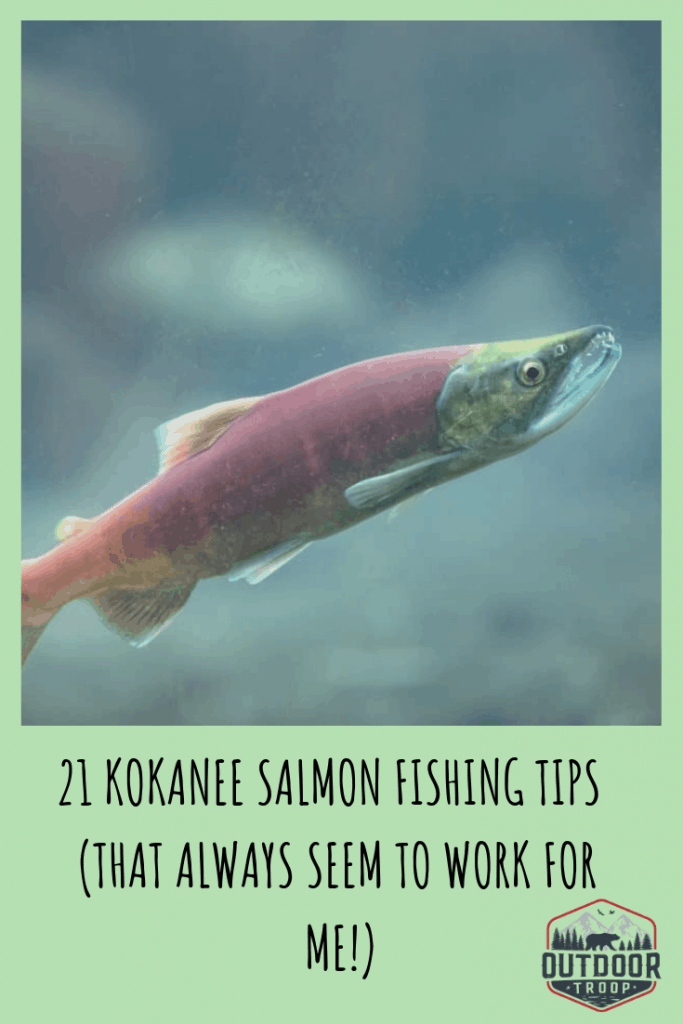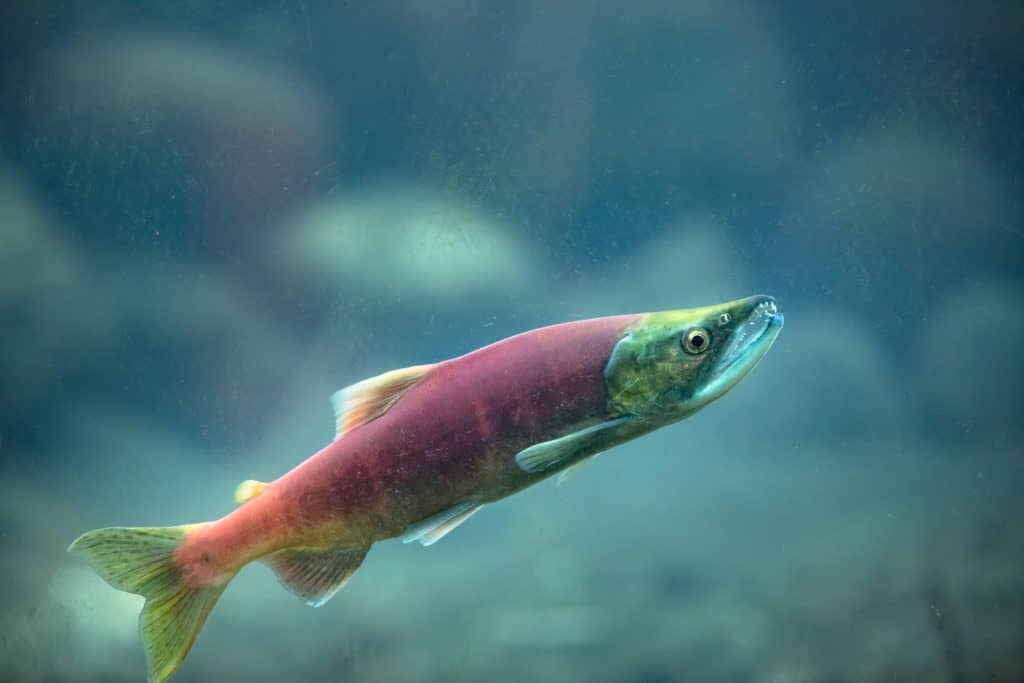
Kokanee Salmon are a type of land-locked Sockeye Salmon that was trapped in a lake or small stream sometime around 15,000 years ago. The North Western Americas are covered with lakes filled with Kokanee. They taste great and are fun to fight, so it’s no wonder that they are one of the most popular fish to target in Idaho, Oregon, Washington, Alaska, and in British Columbia.
Kokanee are aggressive fish, a factor that has to be taken into consideration when trying to target them. I have been fishing for Kokanee for a few years now, and I have a few tips that I would love to pass onto new anglers trying to catch a few.
1. The Dodger/Hoochie Setup
Kokanee trolling can rarely be done without a dodger or two on your lines. The dodgers reflect sunlight towards the fish and attract the fish towards the boat. By bending the dodger a little in the middle, you are able to give the dodger action of its own. It will be able to swing back and forth and get the kokanee to come closer.
A hoochie is a very effective Kokanee lure, and there isn’t much reason why. The Kokanee seem to love hitting the little plastic limbs/ tentacles that are on hoochies. And because the hook is right in the middle of the limbs, the kokanee are usually hooked pretty well.
Having multiple lines in the water will make it seem like that your hooks and dodgers are a school of fish. The Kokanee Salmon will follow your ‘school’ around until they get irritated enough to strike out.
2. Corn and Scenting
Kokanee are zooplankton feeders, so it is a mystery why the fish love to bite Kokanee. There isn’t much rhyme or reason to why, but because it works, corn is used very often. Regular white shoepeg full kernel corn can be used, and the cheaper, the better.
The corn is the correct size, but the real reason that the corn is used is because it can retain smells very well. The real tip here is soaking the corn in another substance and getting a strong foreign smell that will irritate the Kokanee down to the fish.
Experiment wiht different smells, but be sure to use garlic for at least some of your corn. The Kokanee don’t really like the smell of garlic. It’s too strong for them, and it doesn’t smell like anything else around them. Because of this, the Kokanee will become aggressive towards the corn.
3. Downrigger
A downrigger is the piece of equipment that will be able to get the line down deep into the depths of the lake. There is a very heavy weight connected to the boat that will drop straight down. There is another little piece connected to the weight that can be clipped to the line. This will take your line down to the depth and keep the lures running around that point.
When the fish bites your hook, the line pops off of the weight and is able to be freely reeled up. The weight can be brought back up and the line reattached. The process repeats itself but keeps everything very constant.
Downriggers have only one downside. They are expensive to buy. They run for around $500, but can get up to $1200. There is an easy solution to not having one, though.
4. 1.5 oz Weight or Leaded Line
Attaching a 1.5 oz weight to the line will allow the line and lure to get as deep as you want the line to go. Using a regular salmon weight can also get the line down deep as well. Just attach it just before the dodger and the leader. The weight will add more weight when trying to reel in a fish, so the fish will seem bigger than it actually will.
Another alternative is using a weighted line. A weighted line is a line with a lead core that is covered in, usually, a braided line or a different material. This keeps the line sensitive, but because of the lead, the line will sink and will be able to act as a downrigger and get the line deep enough.
When fighing a fish, the line will add more weight and it will be more dificult to get the fish up to the boat. While this seems line a downside, I actually enjoy the challenge to get the fish up. Especially with their soft mouths, it is a challence to get the fish up without tearing their mouths.
5. Reel in Slowly
Kokanee Salmon have very soft mouths. And because of this, there is always the worry that the hook set and reeling in can rip the hook out of the Kokanee Salmon. Make sure that as you reel in, or think that you might have a Kokanee Salmon on the other side of the line, that you set carefully and not too violently, and that you reel in gently.
But be careful: not enough tension will allow the fish to be able to get away and twist out of the hook. The tension will allow you the control you will need to get the Kokanee towards the boat.
Anyways, its more fun to slowly reel in a fish than just cranking in until you get one on the boat. Because these fish take a little more finesse to get them to the boat, they are very fun to fight.
6. Monofilament Line
Another easy way to reduce the amount of stress put on the Kokanee’s mouth is by using Monofilament fishing line. Mono line, as it is very regularly called, is made of a semi-clear material that has the most stretch out of all types of lines. As the name implies, it is made out of one material and is very durable because of this. The clear color makes it a good choice for a fishing line.
The stretch it has is just enough to still be very sensitive but also has enough give that it will stretch as the hook sets. This helps as the fish is started to be dragged along behind the boat. The give will allow the hook to be set gentler and the hook not pulled out as the boat continues and the fish starts to fight.
7. Have Your Net Ready
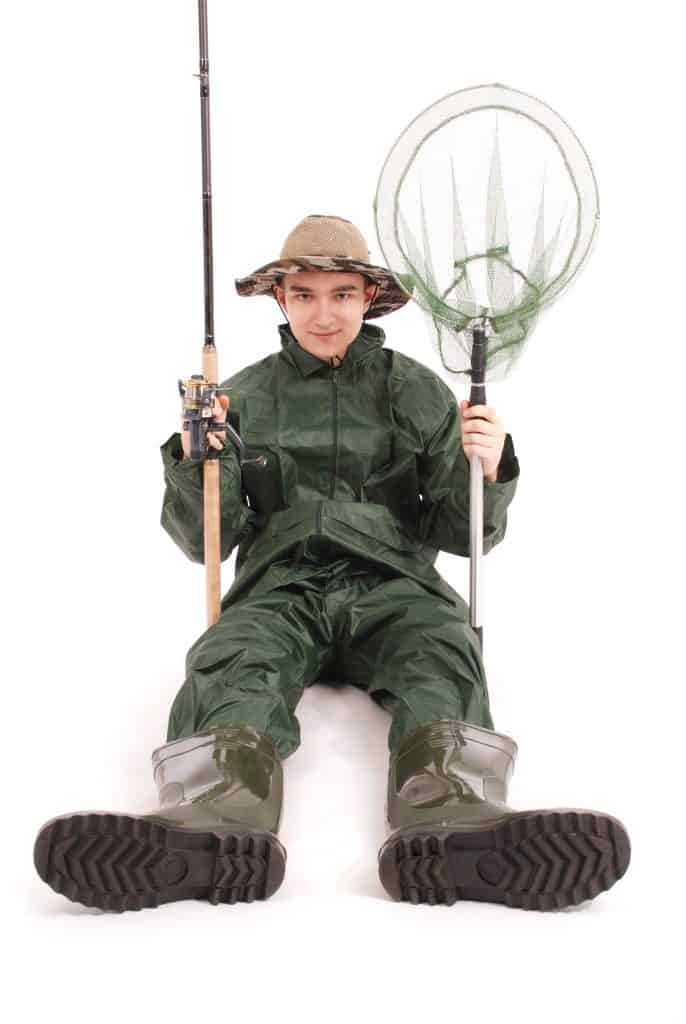
Because Kokanee Salmon have very soft mouths, when they jump out of the water, they might become unhooked and get away. If you can get the Kokanee to the surface, there is always the chance that the Kokanee will be able to get off the hook.
Having the net right there ready will help to get the Kokanee Salmon into the boat and not let them get away. This will also help with making sure that they Kokanee don’t try to get under the boat or to somewhere that the line can break or get tangled.
A longer net is usually. You will be able to get the fish further from the boat. While that can be both a good and a bad idea, it will be beneficial if the Kokanee has less time to get off the hook. Make sure the mouth of the net is wide as well. This will make scooping the fish up easier and make it more certain that the fish won’t get away.
8. PINK
Another great mystery of fishing is why Kokanee hate pink. It is a known fact that Kokanee strike things that annoy them, and pink is the color that has got the most success, so Kokanee anglers use it frequently.
The best lures for Kokanee are usually pink and imitate bait fish. There are also many Kokanee baits that are purposely dyed pink because the color is just so successful. A pink hoochie lure with a piece of scented corn will catch the most amount of fish in an average year.
Although pink is the best color, some anglers don’t use it as often as other people. They use reds, oranges, and some light purples. I’ve talked to a few anglers on the water, and although they swear by pink, they are usually using an orange or red. Not sure why, but I guess experimenting is sometimes good. Who would have thought.
9. Change Colors Before Type
When trolling for Kokanee, don’t change the type of gear that you’re using. It’s good to use a variety of lures, but try to make it a rule of thumb to keep each rod consistent with the type of lure that is used on it. This will make things easier, because a hoochie set up is slightly different than a spoon setup or a different kind of lure.
Instead, change the color of the lure. If you’re using a pink wedding ring, switch to a red wedding ring, or change the color of the blade that circles the lure. Sometimes bronze will work better where silver or nickel fails.
Changing lures is less effective because the hoochies work the best. It’s as simple as that. There is also the option of using different baits. Instead of corn, try dyed-pink shrimp, or dyed-red maggots. Colors matter more.
10. Distance from the Shore
Kokanee Salmon like deep water. Because of this, they are usually not that close to the shore. Try around 50 feet away from the shore when trolling. If you aren’t getting any bites, go deeper than you had been trolling.
After changing the depth, change how far out you troll. Sometimes moving a few more feet out into the water will be enough to get the fish to start biting. Keep on getting trolling at varying distances and depths until you get one that works well. If there are other people on the lake trolling, try trolling the same distances as them. If they seem friendly enough, ask them, but be sure not to fish where they are. It’s very annoying.
If you’re having more troubles catching Kokanee, go to your locat fish shop and ask people there if they know where the Kokanee Salmon hang out at. Its different at every lake.
11. Fish Finder
Because Kokanee Salmon usually group together in a school, having access to a fish finder will be very valuable to your fishing experience. The sonar-using device will be able to find the fish easier than solo fish. Once you know the location of the school of fish, troll over that area a few times.
A fish finder can also be helpful in finding out how deep the water is in a certain area. One of my friends uses his fishing boat to pull his kids around on water skiis. He uses the fish finder to tell if its deep enough to let them ski safely. If you can use it for multiple things, that can make the purchase even more worth it.
A fish finder can get kind of expensive, but they are very worth the price. Find one online for a reasonable price. Amazon sometimes has surprise deals on fishing supplies, so check back regurlary on Amazon.com.
12. Troll Faster Over Groups
Because Kokanee group up in schools, troll a little faster over the areas that you spotted a school with your fish finder. This will make them more aggressive and more likely to strike.
Kokanee Salmon school up because it gives them a sense of protection, but this actually will make them safer. Kokanee are sought after by many fish-eating species of fish.
Because they are so skittish if a faster lure comes by a lone fish, they will get spooked and will swim away from it, rather than striking. Because of this, more fish will be aggressive and will be more likely to bite the hooks.
13. Serpentine, The ‘S’ Turns
Many trolling guides and anglers tend to go for the sharp turns that will lower one side of the boat and lift the other. If you have lines on each side, one of your lines will be lifted and the other will be dropped. While this is a good method of fishing, there is an even better way of trolling.
Traveling in the pattern called “Serpentine” will get you the best results. By going back and forth, the lines will both be dropped and lifted quite frequently. This can get you seasick, with this movement, but the fish will probably bite frequently enough that you will be able to get a rest in between.
The ‘S’ shaped path will turn more fish towards the boat as the dodgers will be able to reflect more light in more directions. This will also make your artificial school of fish seem more like a school of fish trying to swim away from a predator.
14. Throttle Up and Down
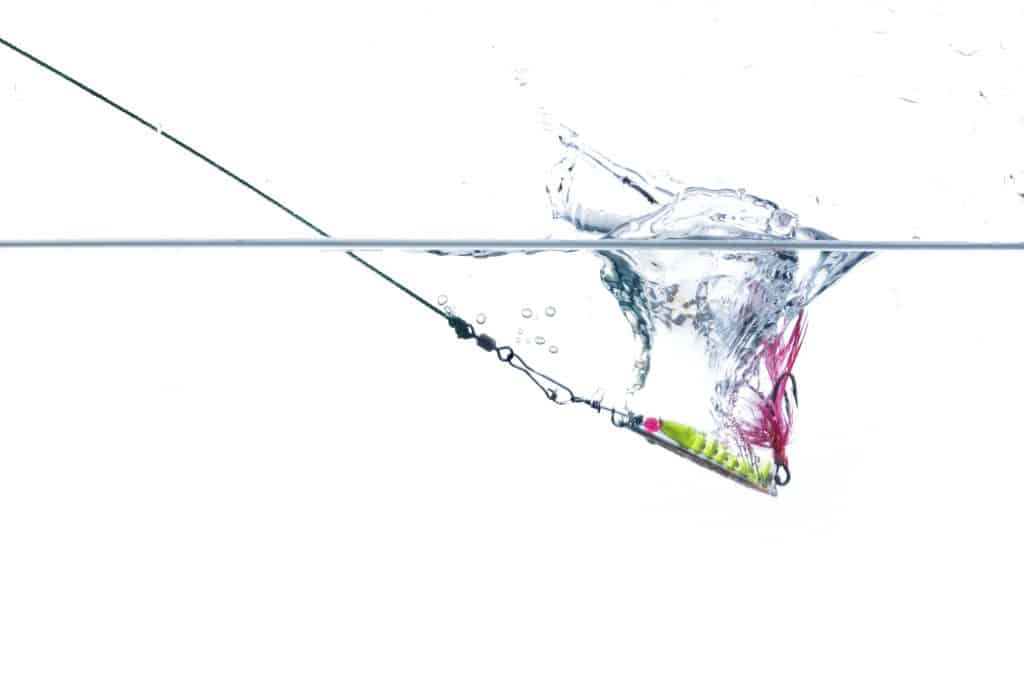
Keeping a constant speed can quickly become the downfall of your trolling experience. The fish will not be interested in a lure that has one set action. By changing the speeds at which you go, the lure and dodger will have a variety of actions that will attract the fish.
When I go trolling on the lakes, I usually change the speed in a range of about 1 MPH. This is a pretty big range, and it doesn’t have to be so dramatic with your experience. I usually start around 1.5 MPH and make my way up to 1.8 MPH. if I don’t have that much luck, I slow down again until I catch something, or I’m going 0.8 MPH.
The speeding up of the boat, consequently, will increase the speed of the lures on the boat. By going slower, the lures will slow down and not travel as fast. Kokanee strike when the lure is falling, so when the boat slows down enough, the kokanee will strike more often.
15. With or Against
One of the quickest ways that your fishing trip can go down the drain is with tanalged lines. Sometimes its unaviodable. The fish fights towads another line and snags it before you have time to get the other rod out of the way, or you just didn’t notice.
One of the most common ways that a fishing line can be entangled with another is because of the wind blowing the lines into each other. When trolling, make sure never to go sideways into the wind, else you risk getting the lines messed up.
Making sure that you always travel with or against the wind will help with keeping your lines untangled and ready to twitch if a fish strikes. The wind can be a great hinderance to fishermen, but there are easy ways to get around the wind’s bothersome personality.
16. Strike on Falling
When trolling or jigging for Kokanee, the action of the lure is very important. If the lure or bait is not properly presented to the fish, the fish may very well ignore the hook completely. The most important action that the Kokanee are most likely to bite is when the lure is falling.
When talking about jigging, this is a very good thing to hear. The jig is usually falling, so there is a lot of opportunities to present a falling hook and bait to the Kokanee Salmon. Jerking the jig up slightly and letting it fall back down will both make the lure seem alive and get the action that you will want.
For trolling, making the lure fall isn’t always easy. But it is possible. The lure does drop a little when the boat turns in its path. It drops significantl when doing a very sharp turn, such as a U-turn.
17. Faster and Deeper Trolling for Bigger Fish
Kokanee are most likely in a school with a few other fish. Because of this, the fish are going to be more aggressive. They are going to bite, so now the goal is to get the bigger fish to bite first.
One tactic to do this is to troll deeper. The bigger Kokes are going to be deeper in the water. They can survive here because the other species that try to prey on Kokanee will not be able to kill them or eat them.
But this tip is about how fast you’re traveling. The bigger Kokanee are going to be able to swim a little faster than the smaller Kokanee. This means that you can troll faster than you originally thought you could. Instead of trolling around 1.5 mph, go for a little faster. 1.8 or almost 2 mph .
This will help you catch bigger Kokanee, which are more fun to fight, and more meat to eat.
18. Line Counter Reel
A counter reel is a device that can accurately tell you how much fishing line you have let out of your reel. This is very helpful for trolling and jigging, the two main methods used to catch Kokanee. If you pair that with a fish finder, you will be able to know exactly how deep you will have to drop the line, and you will be able to get the line down exactly down that far.
For trolling, the drag the water has on the line will have to be taken into consideration. There are a lot of things online that can tell you how deep the line will go depending on the weights you have on the line, the type of line, and how fast you are going.
Jigging for Kokanee Salmon is best done on the bottom of the lake and worked up to the surface. It’s not always a good thing to let your hook touch the bottom of the lake, so paired with a line counter and a fish finder, the line counter reel can be a very useful tool.
19. Fish Year-Round
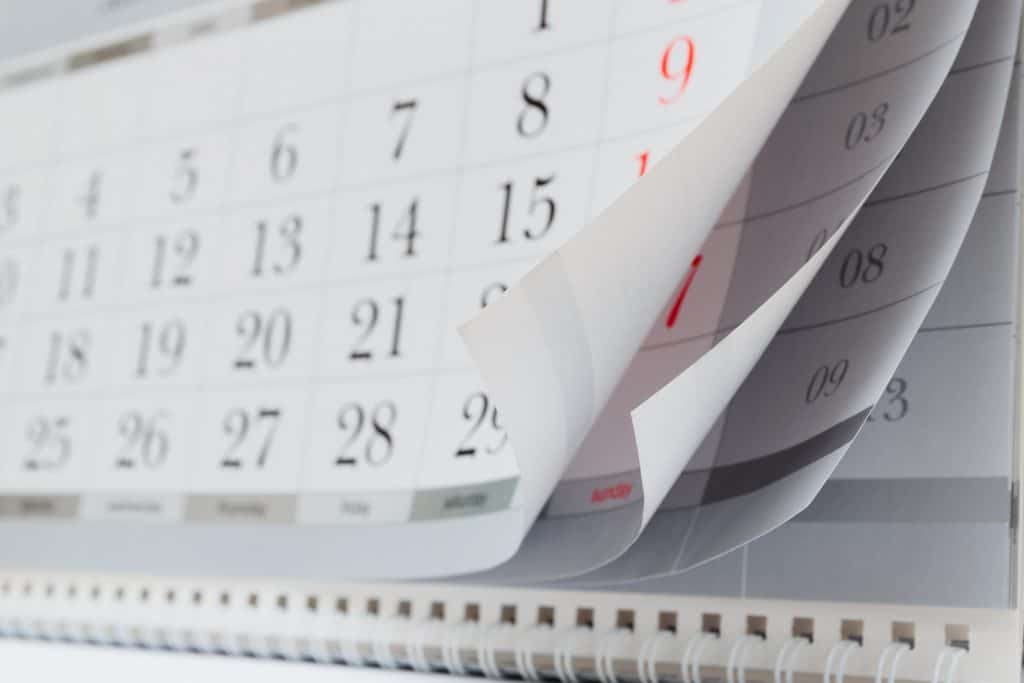
Kokanee Salmon are land locked, so they are stuck in the lakes. They can be caught year round, so get out to your lakes! In the winter, you can go ice fishing. While this adds more expenses with more needed equipment, you’ll be able to use that equipment for any type of ice fishing.
During the late spring and early summer months, go jigging and try your luck with dropping jigs on Kokanee Salmon schools you find with your fish finder. Once the Kokanee start going deeper in the later summer and early fall, try your luck trolling for the fish.
Each season has different lures and baits that work best for them, so if you don’t know, experiment, or ask people you think that would know.
20. Set Lines at Varying Depths
In any kind of Kokanee Salmon fishing, this applies very strongly.
Trolling – If you have five lines out, have one at the recommended depth and distance behind the boat. For the other four, change it up in increments of 10. One 10 feet deeper, one 10 feet shallower, one ten feet further back, and the last 20 feet further back from the original.
Jigging – In jigging, you have one rod that is action-focused, and another suspended in the water with bait. Jig starting at the bottom, but once you have a depth that works well, drop another line down at that depth and let it sit and be bit.
Ice fishing – When Ice fishing, its a good idea to have as many holes as you can, and to space them out every 10 or so feet perpendicular from the shore. The first should be about 10 feet under the ice, and the next four down another 10 feet than the last. If the lake is shallower, put the rest a few feet above the bottom of the lake.
21. Spend Wisely
A lot of the Kokanee Salmon require a few specific pieces of equipment to be most effectively caught. Even if it is just a boat, it’s really good to have. Actually, especially if its a boat.
For trolling, and although it isn’t exactly required, a downrigger would be a very good sale. Consider buying quite a bit of leaded fishing line, and also a few weights. There are small salmon downrigger clips that can be easily attached to a line and will get the hook down to the correct depth.
Another piece of tech that would be very useful would be a fish finder. The ability to see the bottom of the lake would be amazing to have. The fish finder isn’t a bad purchase because of how useful it can be. It can help out with jigging and with ice fishing.
Related Questions:
Is Kokanee a salmon or trout? Kokanee Salmon is actually land locked Sockeye Salmon, an ocean and river species. They tend to be smaller than Sockeye Salmon, and they act more like trouts, but they do not breed with either. Kokanee Salmon are considered a separate species than Sockeye Salmon.
What do Kokanee Salmon like to eat? Kokanee Salmon are strictly zooplankton eaters. Despite constantly biting lures, Zooplankton, very small organisms floating in the water, is their only source of food. Many types of fish eat Kokanee, though. Kokanee Salmon are also known to eat very small insects, but that is a lot less common. Kokanee Salmon have gill rakers that make eating other things harder.

